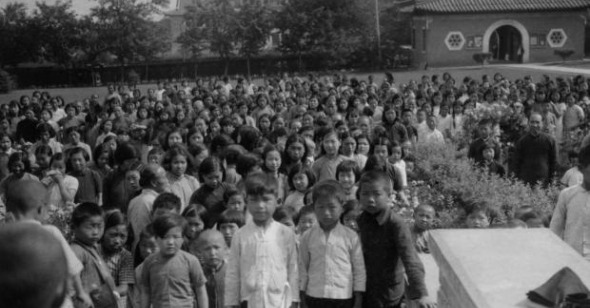by Michael Joshua Rowin
Nanking
Dir. Bill Guttentag and Dan Sturman, U.S., ThinkFilm
In the documentary Nanking, directors Bill Guttentag and Dan Sturman piece together the tragic story of the Japanese army’s sacking of the titular Chinese city during World War II using, in part, newsreel footage and emotionally wrenching interviews with survivors and former soldiers. But they’ve also enlisted familiar actors—Woody Harrelson, Mariel Hemingway, Jürgen Prochnow, John Getz, and Stephen Dorff, among the most notable—to read letters and diary entries by the international team of doctors, missionaries, and business people who served as Nanking’s “Safety Zone” committee and sheltered, fed, and protected citizens in an agreed—though often infringed—upon neutral site for refugees of the initial wave of destruction.
This novel approach to the representation of historical material yields mixed results. There’s no denying that the vocal intonations and facial expressions of consummate thespians (with the exemption of Hemingway, who seems to equate emotion with constant head shaking) impart a deeper feeling of the committee members’ despair and desire to take action upon witnessing atrocities, more so than when similar services are undertaken in most documentaries by bland, faceless narrators. But as much as they elicit our empathy, the actors have the potential to distract from the very subject to which they’re supposed to draw attention. Though their intentions seem good enough—to lend their modest celebrity to the acknowledgment of an oft overlooked and, as is sadly the case in official Japanese history, repressed war crimes—one wonders at their center stage positioning (and, in effect, the center stage positioning of the Western saviors they’re “playing”), in comparison with interviewed Chinese survivors and former Japanese soldiers, none of whom have their words interpreted by famous or semi-famous personages.
One quibbles over this aesthetic choice only because Nanking’s subject is, needless to say, extremely important—the last thing it deserves is to be once again overshadowed. Ultimately, and thankfully, Guttentag and Sturman don’t allow that to happen. The committee members’ heroism is justly lauded, but it’s the events they witnessed—and despite their greatest efforts were often powerless to prevent—that constitute the film’s reason for being. The Japanese army’s authorized mass rape, pillage, and murder of the Chinese has until recently (thanks also to Iris Chang’s The Rape of Nanking) remained one of the Second World War’s forgotten stories, and Nanking brings the facts to harrowing life.
The film contains among its newsreel footage some shocking evidence filmed at the time of victims of Japanese brutality (smuggled out of China by a committee member), as well as testimonies from survivors who lived through, among other nightmares, sexual violation and the torture and killing of loved ones. Guttentag and Sturman often stay with interviewees for extended lengths of time, allowing for not only nearly unedited accounts of agonizing experiences, but also gut-wrenching emotional displays from people who still live with the memory of the unthinkable. Nanking may center on courageous people like John Rabe and Minnie Vautrin, both of whom harbored and saved the lives of hundreds of civilians (and were rewarded with postwar poverty and suicide), but it’s the Chinese massacre victims who emerge with, and as, its real story.
